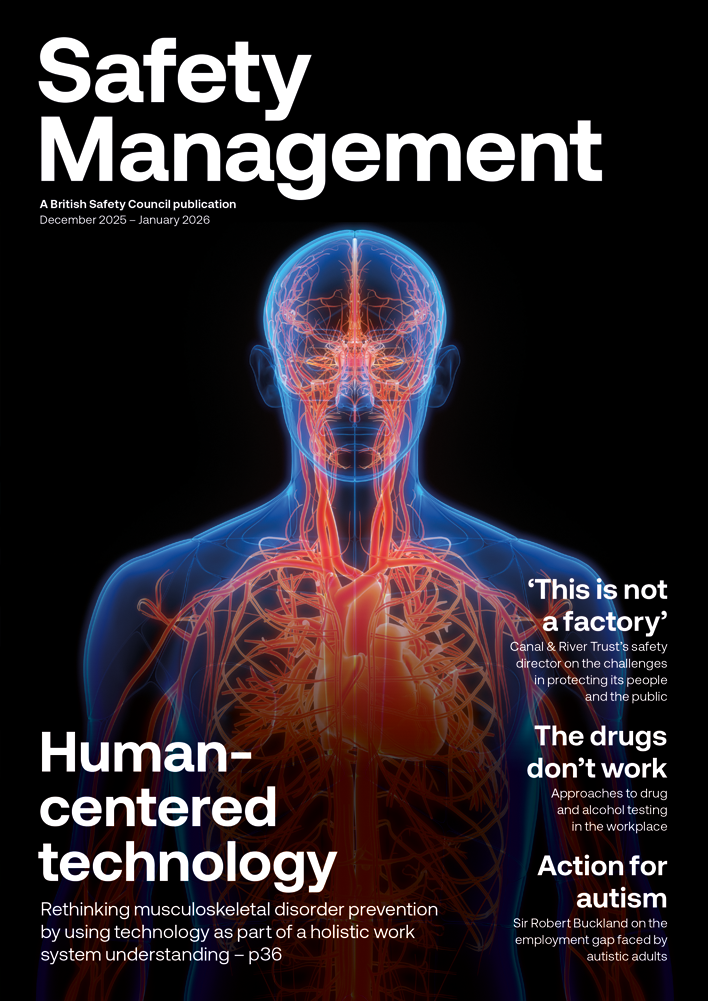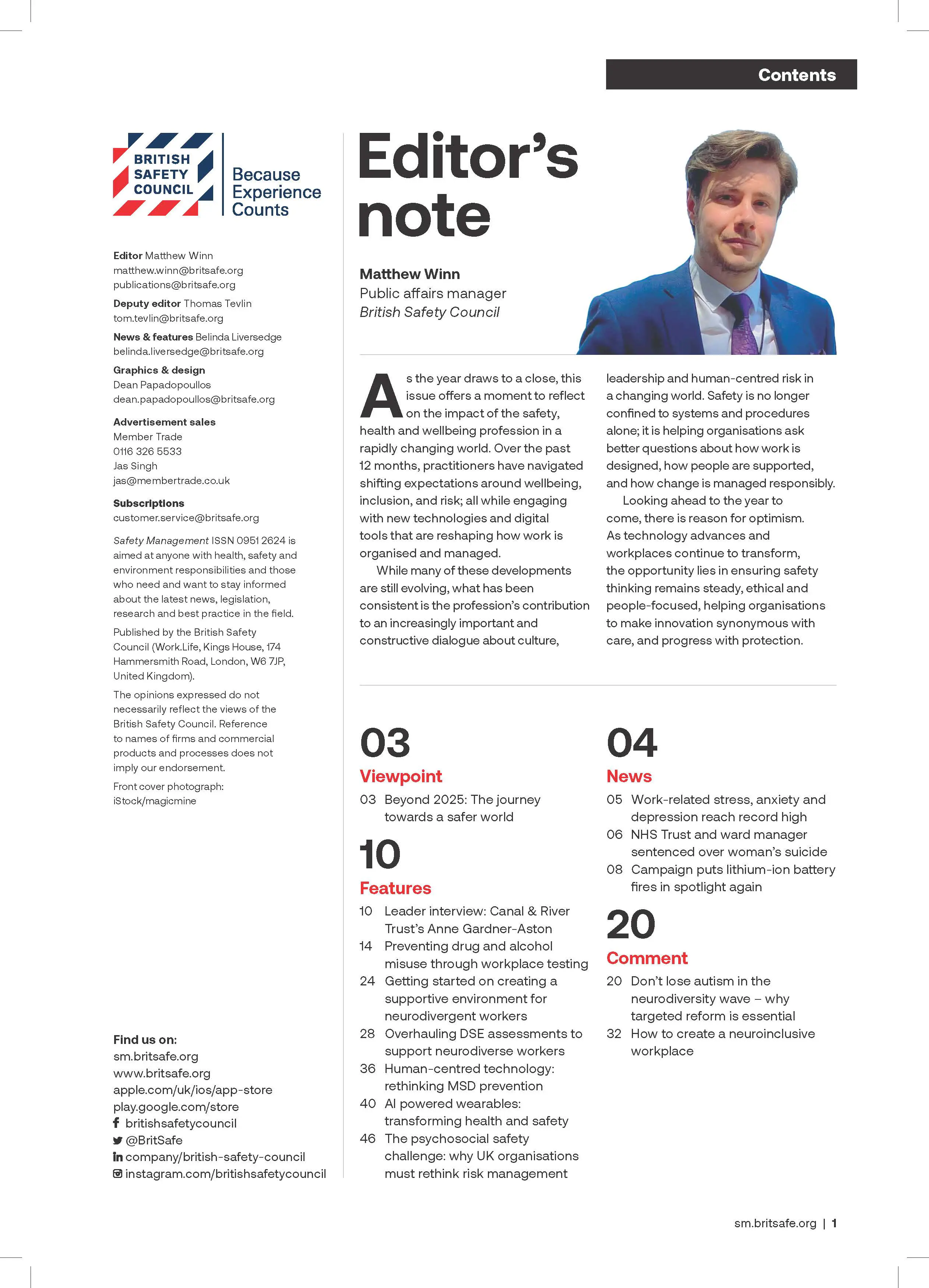Prolonged and excessive sitting poses a major risk to our health, but the Get Britain Standing campaign and On Your Feet Britain Day on 25 April are a great way of encouraging workers to sit less and move more.
Features
Sedentary working and how to combat the ‘sitting disease’
The Get Britain Standing campaign this year marks a decade of growing awareness and understanding of the plethora of health risks associated with prolonged sedentary behaviour among the workforce. The campaign promotes the #sitless #movemore message to UK workplaces, identifying easy solutions to help us sit less and move more at work and in turn deliver life-changing benefits all over the UK.
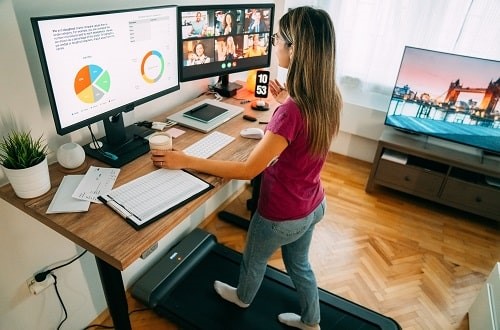 Photograph: iStock/martin-dm
Photograph: iStock/martin-dm
In doing so, the campaign has revolutionised the way we work and led to a massive increase in awareness of the problem of sedentary behaviour among workers. It has also encouraged the rapid introduction of standing desks for office-type work, now a common solution to improve our physical and mental health.
Founded and launched in March 2014 by myself, Gavin Bradley, the Get Britain Standing campaign originated from my discovery of standing desks during a visit to a drug and alcohol charity in Gothenburg, Sweden, in 2013. At the time there was no narrative around the ‘How’, ‘Why’, ‘Purpose’ of a standing desk. Intrigued by research featured on the BBC television programme, Trust Me, I’m a Doctor, presented by Dr. Michael Mosley, I delved into the work of the sedentary behaviour science community. I discovered how Professor John Buckley at Shrewsbury University had produced research revealing that post-meal standing or light activities led to steadier blood sugar levels compared to those who sat uninterrupted after lunch time.
Recognising that 70 per cent of sitting time occurs in offices, I launched a targeted campaign aimed at ending the ‘sitting disease’ and promoted the growing evidence base for active working among employers, workplace stakeholders and the general public. Get Britain Standing aims to address the escalating scale of obesity, mental health and diabetes issues, by advocating basic physical activity interventions – such as standing desks, standing meetings and walking meetings – to be prescribed as workplace solutions.
Now in its 10th year, the campaign has transformed work approaches by encouraging more movement, challenging the status quo and promoting a dynamic, health-conscious workplace. For information on how to get involved in the campaign, click here.
What is Active Working?
Active Working is a community interest company (CIC) founded by myself, which spearheads the Get Britain Standing campaign. The CIC has become a hub for evidence-based workplace research, showcased at Active Working Summits that have been endorsed by the former Chief Medical Officer of Public Health England, Dame Sally Davis. These summits, featuring international collaborations with scientific and workplace experts, have helped guide employers toward optimal active working solutions, which are available through companies like Yo-Yo Desk.
The first Active Working guidance globally was published in June 2015 by the British Journal of Sports Medicine (BJSM), and was jointly commissioned by Active Working CIC and Public Health England (PHE).
It included FOUR key recommendations relating to minimising harmful sedentary behaviour in offices, namely that all businesses should encourage workers to:
- Undertake two hours daily of standing and light activity (light walking) during working hours, eventually progressing to a total of four hours for all office workers whose jobs are predominantly desk-based
- Regularly break up seated-based work with standing-based work, with the use of adjustable standing desk/workstations
- Avoid prolonged static standing, which may be as harmful as prolonged sitting. Employees should also alter their posture and undertake light walking to alleviate possible musculoskeletal pain and fatigue as part of the adaptive process
- Embrace other healthy behaviours, such as cutting down on alcohol, quitting smoking, eating a nutritious diet and alleviating stress. Employers should also warn staff about the potential dangers of too much time spent sitting down either at work or at home.
‘Get up offa that thing’: Challenge yourself! Sign-up for On Your Feet Britain on 25 April.
NHS guidance on maintaining good physical and mental health advises us to get up and walk around for at least five minutes each working hour and the Get Britain Standing campaign has achieved excellent workforce participation with its annual On Your Feet Day event in April, using tips and guidance to encourage workers to convert two hours in the day from sitting to standing.
 On Your Feet Britain on 25 April is an awareness day to get desk-based workers moving.
On Your Feet Britain on 25 April is an awareness day to get desk-based workers moving.
Get Britain Standing therefore encourages employers and workers to take part in On Your Feet Britain® – the national activity awareness day when desk-based workers across Britain participate in a variety of fun and simple activities to #SitLess and #MoveMore at work. Taking place on Thursday 25 April 2024, On Your Feet Britain is a FREE and FUN way to reboot and energise your workplace habits. It’s FREE to sign up –simply register here.
Strategies and solutions for incorporating movement at the office
Strategies for incorporating movement during office work will of course vary from one office and home to another. Nevertheless, there are some basic steps which we should all consider introducing into our day-to-day office work:
Taking regular breaks
Taking regular breaks throughout the workday is essential for incorporating movement and combating the negative effects of prolonged sitting. Employees should be encouraged to take short breaks every hour to stand up, stretch and move around. These breaks provide an opportunity to increase blood flow, relieve muscle tension and re-energise the body and mind.
Desk stretches and exercises
Desk stretches and exercises offer a convenient and effective way to incorporate movement into the office environment. By taking a few minutes to stretch and exercise at their desk, individuals can counteract the negative effects of prolonged sitting and promote better physical wellbeing. Some simple stretches and exercises that can be done right at the desk include:
- Neck stretches: Gently tilt the head to the side, bringing the ear toward the shoulder, and hold for 15–30 seconds on each side. Repeat the stretch by tilting the head forward and backwards to relieve tension in the neck and upper back.
- Shoulder rolls: Shrug the shoulders up toward the ears, then roll them backwards in a circular motion. Repeat this exercise for 10–15 seconds, then reverse the direction and roll the shoulders forward.
- Upper back stretch: Interlace the fingers in front of the chest, palms facing away. Slowly push the palms forward, rounding the upper back, and hold for 15–30 seconds. This stretch helps counteract hunching and promotes better posture.
- Seated spinal twist: Sit tall in the chair, cross one leg over the opposite knee, and gently twist the torso toward the crossed leg. Hold the twist for 15–30 seconds, then switch sides. This exercise helps release tension in the back and improves spinal mobility.
- Leg extensions: While seated, extend one leg forward, keeping it parallel to the ground, and hold for a few seconds. Lower the leg and repeat with the other leg. This exercise helps activate the leg muscles and promotes blood circulation.
- Desk push-ups: Stand a few feet away from the desk and place your hands shoulder-width apart on the edge of the desk. Step back to an angle and lower your chest towards the desk, then push back up. This exercise strengthens the upper body and engages the core muscles.
Active meetings and walking breaks
Employers – and employees – should encourage a culture of movement by incorporating active meetings and walking breaks. Instead of gathering around a conference table, teams could conduct meetings while taking a walk or standing. Walking breaks can be taken individually or as a team, allowing one to get moving and engage in light physical activity. These active breaks not only promote movement but also encourage collaboration and creativity.
 Active Working founding director Gavin Bradley: "Employers and employees should encourage a culture of movement by incorporating active meetings and walking breaks." Photograph: Active Working
Active Working founding director Gavin Bradley: "Employers and employees should encourage a culture of movement by incorporating active meetings and walking breaks." Photograph: Active Working
Ergonomic workstation set-up
An ergonomic workstation set-up is essential for promoting movement and supporting better posture in the office. It involves creating a workspace that is ergonomically designed to optimise comfort, productivity and overall wellbeing.
One of the key elements of an ergonomic workstation is an adjustable standing desk. These desks allow users to switch between sitting and standing positions, encouraging movement throughout the day. By alternating between sitting and standing, individuals can avoid prolonged periods of static sitting and engage different muscle groups. This promotes blood circulation, reduces the risk of musculoskeletal issues and increases energy levels.
In addition to adjustable desks, ergonomic chairs play a vital role in supporting proper posture and reducing strain on the body. These chairs are designed with features such as adjustable height, lumbar support and armrests, which help maintain a neutral spine position and provide optimal support for the back, shoulders and neck. By using an ergonomic chair, individuals can alleviate pressure on the spine, minimise discomfort and improve overall sitting posture.
Furthermore, incorporating other ergonomic accessories can enhance the movement-friendly set-up. For example, standing desk converters and monitor stands contribute to a more comfortable and aligned workstation. These accessories promote proper wrist and forearm positioning, adjusting the height and angle of the monitor to eye level.
Other accessories like anti-fatigue mats and wobble boards offer additional benefits for an ergonomic workstation set-up. Anti-fatigue mats provide cushioning and support, reducing strain on the feet and legs during prolonged standing. Wobble boards promote active sitting by engaging core muscles and improving balance, helping to prevent muscle stiffness and enhance posture.
The benefits of an ergonomic workstation set-up extend beyond comfort and posture. When individuals have the freedom to adjust their workstations and move freely, they are more likely to stay engaged, focused and energised throughout the day.
10 reasons why a standing desk can boost wellbeing and work performance
In recent years, standing desks have emerged as a popular choice among individuals seeking to combat the negative effects of prolonged sitting, driven by growing awareness of the health risks associated with sedentary lifestyles. As more people find themselves immersed in desk-bound work environments, ergonomic workspaces are becoming indispensable for fostering employee wellbeing and productivity.
Standing desks offer numerous benefits for individuals who spend long hours working at a desk. Here are 10 reasons why a standing desk can boost wellbeing and productivity:
- Improved posture
Standing desks promote better posture by encouraging an upright stance, which counters the strain and discomfort associated with prolonged sitting. Unlike seated positions that often lead to slouching and hunching, standing engages core muscles, distributing weight evenly and aligning the spine naturally. This reduces the risk of spinal issues and enhances body awareness, prompting users to adjust their posture and alleviate tension. Learn more about the benefits of standing.
- Increased energy levels
Standing desks can help combat feelings of fatigue and lethargy that often accompany long periods of sitting, increasing energy levels by improving circulation, and delivering oxygen and nutrients efficiently to vital organs and muscles. Engaging key muscle groups while standing stimulates blood flow and metabolic activity, preventing muscle fatigue and promoting alertness. Indeed, one study found that 87 per cent of participants reported increased energy levels throughout the day when using a standing desk.
- Reduced risk of obesity
Standing desks promote an active lifestyle by engaging muscles and burning 35- 40 per cent more calories than sitting. This helps manage weight and reduces the risk of obesity-related health issues like diabetes and cardiovascular disease. Standing also encourages movement and postural shifts, boosting calorie expenditure and metabolic rate, while prompting light physical activities like stretching and walking breaks. Learn more about the importance of regular movement.
- Enhanced focus and productivity
Users of standing desks often experience enhanced focus and productivity due to improved blood flow, which delivers essential nutrients to the brain, enhancing cognitive function. The upright posture associated with standing desks triggers neurological responses that enhance mental alertness and concentration, fostering sustained cognitive function and productivity. The dynamic nature of adjustable standing desks encourages movement, preventing mental fatigue and discomfort associated with prolonged sitting. Standing can also encourage a sense of empowerment and motivation, leading to increased energy and proactive work approaches. Learn how to switch to a standing desk.
- Increased collaboration and engagement
Standing desks can facilitate collaboration and engagement in the workplace by promoting movement and interaction among colleagues. They encourage fluid transitions between individual work tasks and group projects, encouraging impromptu discussions and brainstorming sessions, and standing fosters alertness and receptivity to collaboration, enhancing communication and fostering meaningful connections. Additionally, stand-up desks encourage informal interactions and social engagement, building strong relationships and a sense of community. Learn more about what it’s like to have a sit-stand desk.
- Improved mood and mental wellbeing
Standing desks foster improved mood and mental wellbeing by breaking sedentary patterns, and promoting vitality and empowerment. Increased physical activity stimulates endorphin release, reducing stress and enhancing positivity. Better blood flow to the brain supports mental clarity and focus, while improved posture reduces physical discomfort. Sit-to-stand desks also empower individuals, promoting autonomy and job satisfaction.
- Lower risk of chronic diseases
Prolonged sitting is linked to higher risks of chronic diseases like heart disease, type 2 diabetes and cancer due to metabolic dysregulation and inflammation. One recent Taiwanese study found that constant sitters faced a 16 per cent higher risk of early death from all causes and a staggering 34 per cent increased risk of mortality from cardiovascular disease. Standing desks offer a proactive solution by reducing sitting time and promoting light physical activity, improving metabolic health and cardiovascular function. They also contribute to weight management and help mitigate cancer risks associated with sedentary behaviour. Learn more about what sitting down all day does to the body.
- Better blood sugar control
Standing after meals helps to regulate blood sugar levels and improve insulin sensitivity, which is especially beneficial for individuals at risk of type 2 diabetes. Gravity facilitates glucose movement into cells for energy, supported by insulin action. Standing at your desk promotes muscle activation, improving glucose utilisation and stabilising postprandial glucose levels. It enhances insulin sensitivity, reducing insulin resistance risk. Additionally, post-meal standing aids digestion and nutrient absorption, supporting metabolic health.
- Customisable workstations
Sit-stand desks are adjustable, allowing users to switch between sitting and standing positions throughout the day, providing flexibility and comfort while reducing the risk of sedentary behaviour. Adjustable heights allow users to align their work surface ergonomically, preventing strain and discomfort. This ability to alternate postures enhances circulation, reduces fatigue and boosts productivity. Customisable workstations accommodate diverse body types and even different heights, ensuring comfort and efficiency for all employees. Learn more about how to best use a standing desk.
- Protect cognitive health
Standing desks offer a proactive solution to mitigate the detrimental effects of prolonged sitting on cognitive health. A recent study by the Harvard Medical School found a significant correlation between prolonged sitting and heightened dementia risk. By allowing users to alternate between sitting and standing positions throughout the day, these desks promote movement, circulation, and increased engagement—all crucial elements for maintaining cognitive vitality.
Conclusion
In summary, integrating standing desks into daily work routines can contribute to long-term health and wellbeing by reducing the negative effects of prolonged sitting and promoting a more active lifestyle. In 2024, at a time when the boundaries between work and health blur, investing in a sit-stand desk isn’t just about staying ahead; it’s about prioritising your holistic wellness in an ever-evolving world.
Gavin Bradley is founding director of the Active Working community interest group and chief wellness officer at Yo-Yo Office.
For more information, see:
FEATURES
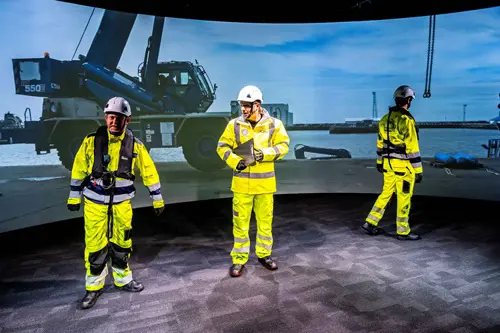
Underpinning safety training with neuroscience for long lasting impact
By SSE Active Training Team (ATT) on 30 November 2025
A behavioural safety training programme developed by Active Training Team for energy provider SSE has been carefully designed with neuroscientific principles in mind – resulting in a prestigious industry award for Best Training Initiative in 2024.
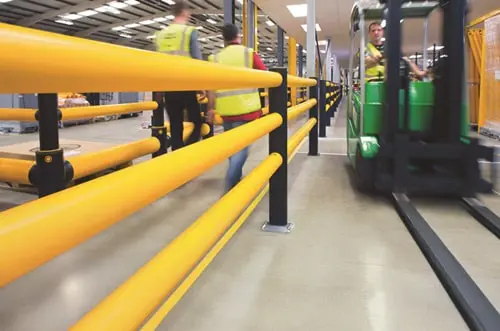
Why a painted line will never be enough
By UK Material Handling Association (UKMHA) on 20 November 2025
Businesses that operate material handling equipment like forklifts are being urged to submit accident and near miss details to a new confidential reporting portal so the industry can identify what needs to be done to improve safety standards.
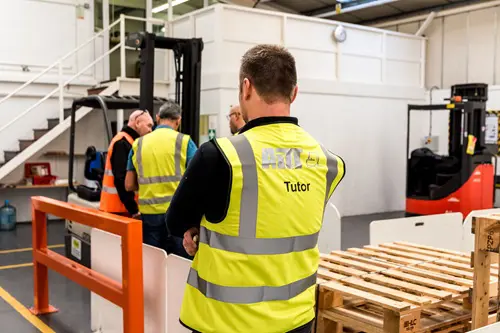
Why workplace transport training is changing in 2026 and what it means for employers
By AITT on 26 November 2025
New workplace transport training categories due in January mean it is essential to ensure operators of material handling equipment have the necessary training for the exact type of machine they use, and accredited training providers are an ideal source of advice and conversion training.


